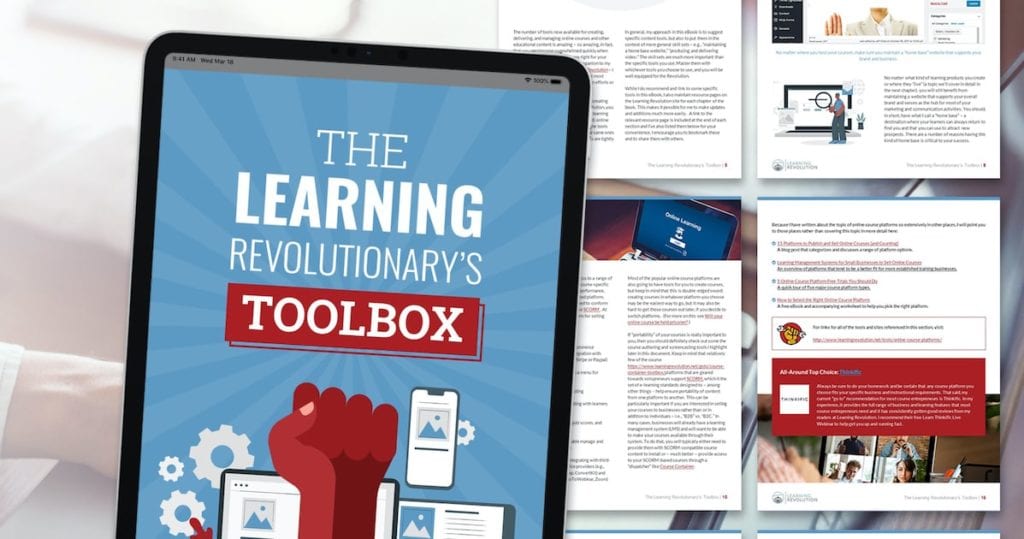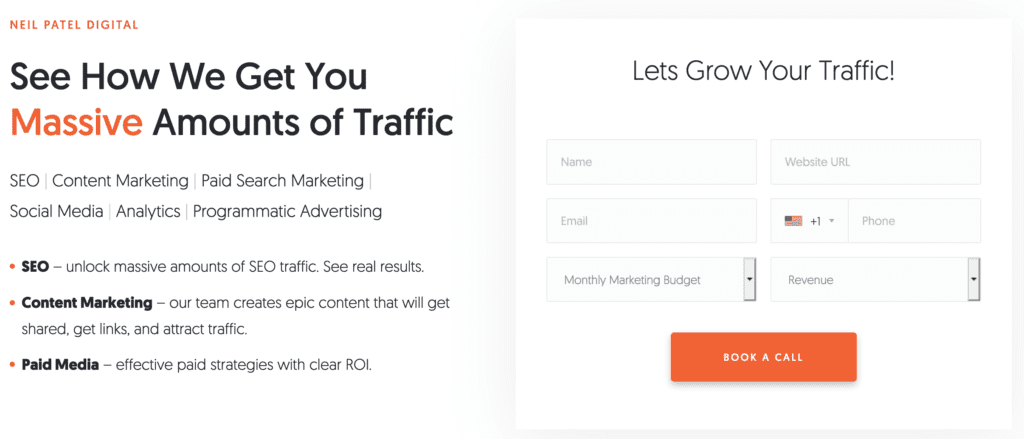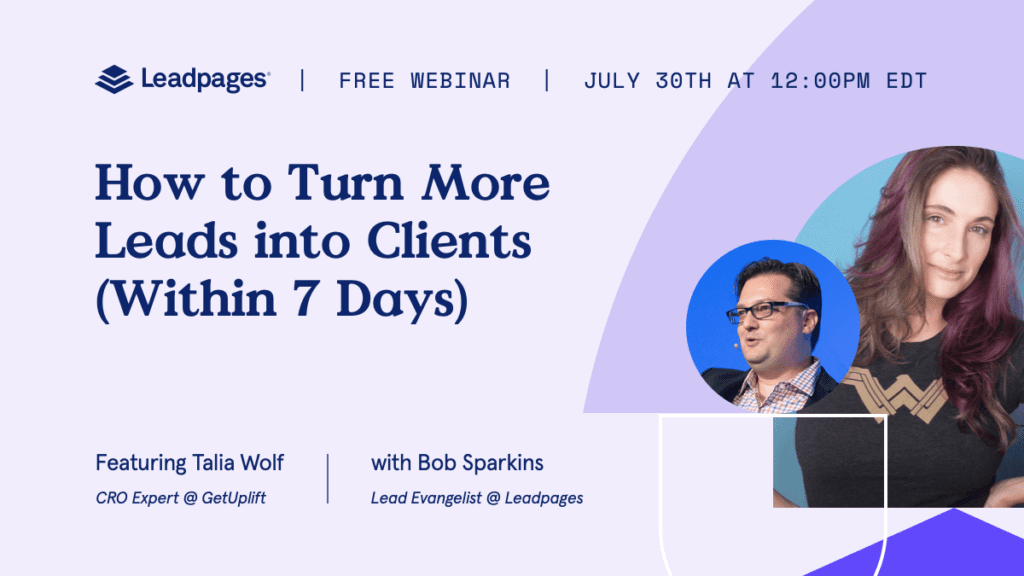

Lead magnets are an integral part of most sales funnels. But what are they, and how can they help your business?
I’ll break down everything you need to know about lead magnets, including what they are, how lead magnets work in a sales funnel, and how to create your own lead magnets. Finally, I’ll provide a list of 10 winning lead magnet ideas for you to use to promote your online learning business.
What is a lead magnet?
A lead magnet is basically a free product you offer in order to attract new leads for your online business. Any business can use them, and all sorts of products can become lead magnets as long as they have value to your target audience. For example, a clothing store might offer a 10 percent discount coupon to newsletter subscribers, or an edupreneur might offer a short ebook relating to one of their classes.
All lead magnets follow the same basic principles. They are:
- Low-cost for the business
- Good value to customers
- Incentives for customers to provide their contact information
The goal of a lead magnet is to attract new people into your business’s sales funnel. Your funnel starts with a broad base of interested people, usually attracted to your website through SEO or paid ads. A blog post about your latest lesson, for example, is a good way to start a sales funnel for an online course. People interested in the subject are attracted to the post – often through seeing it in search engine results – and by clicking through to read it, the end up learning a bit about your, your expertise, and your course.
But most visitors to a Web page leave without taking any other action.
Lead magnets are designed to keep visitors engaged by asking them to stay in touch. A popup offering a free ebook if they sign up for your mailing list is a common example. People who have found and read your blog post have already self-selected as interested in your subject, and the lead magnet should appeal to them. They subscribe to your mailing list to get the lead magnet, and in return you get their contact details and permission to stay in touch. This is the narrow neck of the funnel, where you convert as many visitors as possible into potential buyers.
Getting contact details for potential learners is important if you want to make as many sales of your courses or other offerings as possible. That’s because email marketing can generate a 440 percent ROI — a significantly better rate of return than blog posts, and much cheaper than running paid ads.
Do you need to use lead magnets in your sales funnel?
While lead magnets aren’t required to promote your business, they are extremely effective at maximizing your results.
The days when people would sign up for multiple mailing lists and open them consistently are long gone. We all want to declutter our inboxes, which means getting a customer to provide their email address is much harder now than it ever has been before. Effective lead magnets provide a strong incentive for visitors to your website to subscribe to — and open — your newsletter.
We’ve already seen that e-mail newsletters provide a huge return on investment compared with other online marketing tools. The reason for their success is simple: newsletters deliver your content directly to subscribers. Without a newsletter, you’d have to rely on visitors returning to your content every time you run a new online campaign (blog posts, paid ads, social media updates etc.). Unsurprisingly, the attrition rate for this kind of marketing is very high — the average return visitor rate to a website is 32 percent, meaning around two thirds of visitors to your site never come back once they leave.
Getting visitors to subscribe to your mailing list gives you a second chance to convert them into a paid subscriber. Visitors have already indicated an interest in your subject by virtue of landing on your Web page. If they sign up for your newsletter, they take another step along your funnel to becoming paying customers.
However the average open rate for a newsletter will fall somewhere around 15-25 percent after initial subscription, meaning the majority of subscribers will still fall out of the funnel before making a purchase. Delivering a lead magnet is a great way of encouraging more visitors to subscribe to your mailing list and increases your open rate, improving your engagement rate and ultimately, boosting sales.
How many lead magnets should you have?
While just one lead magnet will have a positive impact on your mailing list sign up rate, why stop there? If you’re running a marketing campaign with multiple landing pages, there’s no reason not to offer multiple lead magnets. You can also combine your lead magnets with a service such as OptinMonster to rotate the lead magnets you show to your website visitors, improving the likelihood of them subscribing to your mailing list.
Ultimately, the visitor has to feel like your lead magnet is worth handing over their email address to get. That used to be a low bar, but many people now value an uncluttered inbox over free information, meaning your lead magnet has to be really enticing. One visitor might be swayed by a free ebook, while another will hold out for a monetary magnet such as a discount on your course or an introductory free trial period.
For edupreneurs, the most obvious lead magnet is a PDF or ebook containing a lesson from your course. That’s fast and easy to put together, and you can create multiple magnets to target different lessons. For example, an educator teaching a course on gardening could create ebooks on how to grow different plants, what to plant in different climates, or seasonal planting schedules for fruit and vegetables.
These lead magnets are extremely popular with creators, although their effectiveness with visitors is waning. How many times have you clicked to ignore a popup offering you a free ebook that you know you’ll never read? While it’s a good idea to put a few together as a first step toward incentivizing your visitors, if you really want to improve your marketing game, it’s time to get creative.
10 winning lead magnet ideas
Whatever lead magnets work best for your business, they should all meet the same basic criteria:
- Solve a problem
- Be specific
- Have high value
- Be instantly accessible
- Demonstrate your experience
Don’t make lead magnets too complicated, or you risk overwhelming your subscribers (or giving too much away!). Instead consider one specific problem that visitors to your landing page want to solve. Come up with a few examples for each post you write and use them to target your lead magnets. A booklet on “How to get rid of aphids” is a better lead magnet than “1001 common garden pests and how to get rid of them.” It’s also faster and easier to create.
Make sure that subscribers can access your lead magnet easily once they’ve signed up. Redirect subscribers to a download page or deliver the magnet automatically the moment they join your mailing list. Nobody wants to wait around for their freebie or jump through additional hoops to get it. Keep it simple. And don’t forget, your lead magnet is a promotional tool, and should convince the reader of your expertise. As an edupreneur, this is your best chance to convert interested visitors into paying learners.
1. How-to content
Many people sign up for lead magnets that promise to teach them how to do something, whether that’s get more organic views on their YouTube channel or successfully fly fish for bass. Create lead magnets that teach one specific skill and provide readers with a roadmap to success. Checklists, cheat sheets, and tutorials are all common formats for this kind of lead magnet.
2. Resources and guides
Whatever your field, at some point learners will need to use specialist equipment or services in order to master their lessons. Using the benefit of your experience as an educator, you can compile a list of the best and/or most cost effective products and services your learners need and offer it as a lead magnet. From recommended computer parts retailers in the Tri-state area, to your pick of the best gardening shears on the market, “Best of” blog posts are enduringly popular. We all like to get the most bang for our buck and transforming that information into a lead magnet will give your mailing list a boost.


3. Premium or gated content
A fast and easy way to generate more newsletter signups is to restrict visibility of the content on your site. This model can deter visitors — it’s annoying to get halfway through a blog post, only to have the remainder obscured by a gateway — but it does encourage more people to provide their email address.
Even better, this method excludes lay readers and immediately captures the most interested visitors in your sales funnel. If you’d rather not block content on your website, you can always offer content upgrades through your newsletter and ebooks and offer them as lead magnets at the end of related posts.
4. Multiple formats
Offering your content in multiple formats is good practice anyway — it makes your lessons more accessible and boosts your SEO. You can also use those formats as lead magnets, for example prompting people to sign up to receive the transcript of your latest video, providing audio copies of blog posts, or transforming the information from your last podcast into an infographic. Summaries or “Cliff Notes” versions of your lessons also make good lead magnets that will attract interested learners to your mailing list.
5. Interactive content
Don’t assume you have to do all the work when it comes to creating a lead magnet. You can also encourage visitors to your site to take a quiz or survey, or sign up to join a “challenge.” This type of content is particularly effective because once we start something, we feel the need to finish it. Simply posing a question and having your visitors select Yes or No is enough to prompt them to complete signing up, like this simple interaction on Neil Patel’s site:


Answer yes and you get take to this:


Edupreneurs can also easily create challenge content for learners to participate in or devise mini courses that are delivered through email over several days.
6. Social inclusion
Make subscribers to your mailing list feel special by offering exclusive group memberships. Something as simple as a Facebook group, Patreon account, or even an early bird waitlist is enough to convey exclusivity and encourage new learners to join.
7. Offline resources
Just because a visitor found you online doesn’t mean you can’t offer a tangible product that they can use anytime. The fastest and cheapest options are printable products, for example calendars, templates, and forms. Providing printable worksheets and test papers is a good way to get learners to engage with your content.
Other ideas include instrument teachers offering sheet music, cookery edupreneurs providing printable recipes, and those teaching seasonal skills could create calendars that learners can refer to throughout the year. If you want to up the wow factor of your lead magnet you can also give away free products such as your book, stickers, or stationery.
8. Insider info
You’re the expert in your field, and visitors coming to your site want to learn from you. A great way to encourage this, and generate new subscribers to your newsletter, is to offer insider information and personal reports. You could do a “State of the industry” write-up, or offer your predictions for an upcoming year. Meteorologists could predict the coming storm season, for example, while an edupreneur teaching people how to trade might pick their favorite penny stocks to watch.
This type of lead magnet is usually the most valuable (outside of physical or monetary offers) and will also require the most work to create and keep relevant, but typically yields high conversions.
9. Products and Services
Everybody likes free stuff, and learners are no different. The good news is you don’t have to go broke to offer visitors a lead magnet that will really catch their attention. Offering access to one lesson for free is a good way to entice learners who will want to continue by buying your course. If you use spreadsheets in your lessons, you can provide the template for free to subscribers, or if your field or promotional materials have some artistic elements, create free desktop wallpapers and phone background files.
10. Financial
At the tight end of your funnel, the biggest converters are financial lead magnets such as tickets to live events, discounts and free trials, coupons, giveaways and more. While a great incentive to encourage signups, be cautious about being too generous with your lead magnets.
If you offer an Amazon gift voucher in a giveaway, for example, you’ll easily generate thousands of entrants (and thus subscribers), but only a tiny percentage will actually be interested in your courses. Keep financial lead magnets strictly related to your products in order to ensure you only attract interested learners.


What lead magnets will you create?
Lead magnets aren’t complicated, but they are extremely effective at increasing the conversion rate between ad viewers or website visitors and mailing list subscribers. Remember to keep your lead magnets relevant to your brand as an edupreneur, and for best results use them as part of a wider marketing strategy.
If you’re short of ideas for getting your business off the ground and increasing your organic reach, check out our rundown of the most effective content marketing strategies.
Table of Contents



